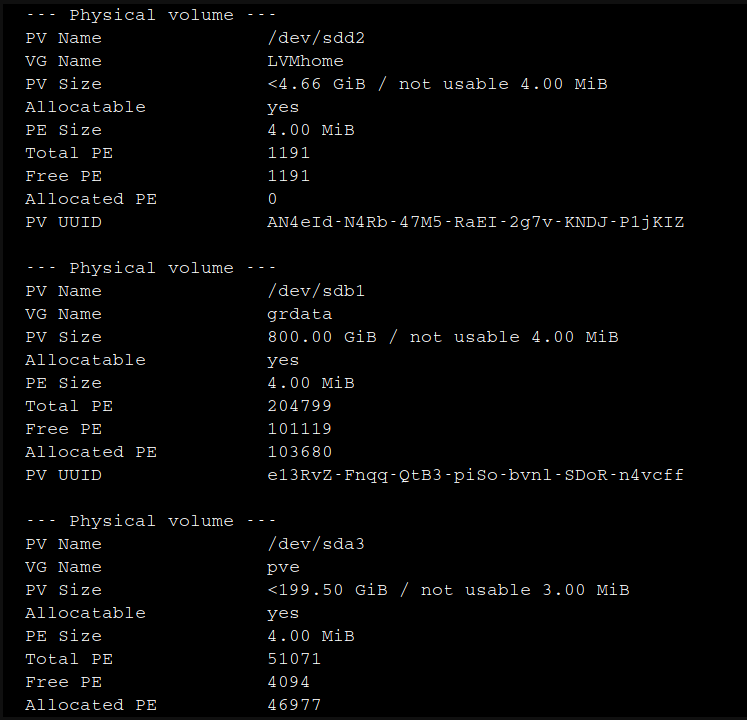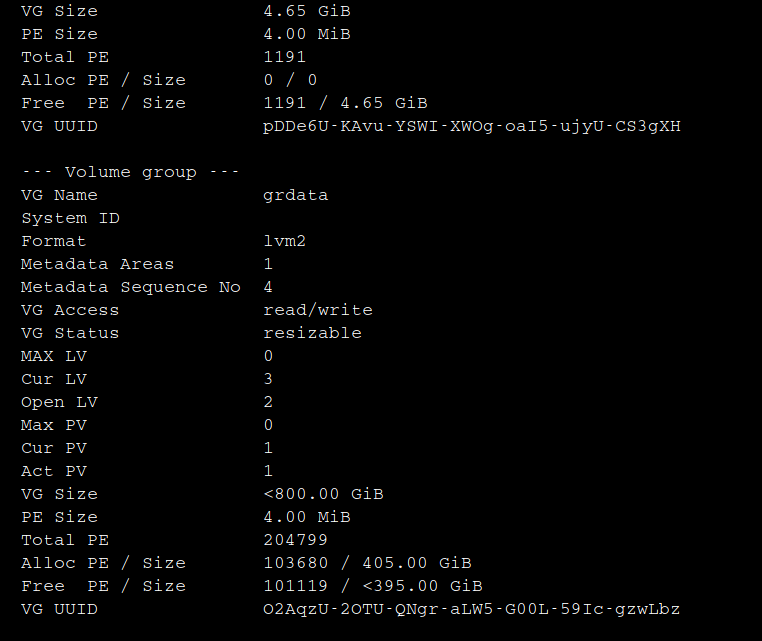Logical Volume Manager
Table of Contents
_Article in progress_
Introduction
LVM means Logical Volume Manager. It allows the partitionning of disk space at a high abstraction level, whatever the hardware ressource used. LVM offers a high flexibility level for resizing the volume. Logical volume can be spread on different hardware storage. There is no more limitation like it could be have with primary and extended partition. LVM can be used on physical hardware, virtual storage (virtualization) and RAID system.
I will first give some definition of objects used by LVM. Then, individual command for each object will be explained. Finally a suite of command will be listed in order to set a LVM system.
Definition
Abbreviation |
Definition |
Comment |
|---|---|---|
PV |
Physical Volume |
It is the lowest level of abstraction, all the hardware available |
GV |
Group Volume |
It is a grouping of several hardware, a cluster of PV |
LV |
Logical Volume |
It is a partition of the GV used by the system on which the FS will be mount |
FS |
File System |
It is the file system of the LV (ext3, ext4, …) |
Linux package
In order to manage LVM, the LVM2 package should be installed:
sudo apt-get install lvm2
This package provides all commands described in the next section.
After installation, you have access to LVM commands: 
Command
All volumes previously listed (PV, GV and LV) have its own command to manage them. These commands are used to create, resize, delete and displayed informations. They are prefixed by pv for physical volumes, gv for group volumes and lv for logical volumes.
Command for physical volume
pvdisplay is used to display all physical volumes. The result should be something like the below picture. It depends of course of your environment.

Fig. 53 Physical volume display
pvs -o+pv_used (Fig. 54) is used to know who use the physical volumes.

Fig. 54 Physical volume display used
pvcreate /dev/sda is used to create a physical volume.
_note: a partition (ie /dev/sdb2) could be used like a physical volume. It must be labeled 8E (type LVM) with the fdsik commmand. The command is then pvcreate /dev/sdb2._
Sum up of physical volume commands
Command |
Description |
|---|---|
pvcreate |
create a physical volume |
pvresize |
change the size of a physical volume |
pvdisplay |
display information of a physical volume |
pvremove |
delete a physical volume |
pvmove |
move the content of a PV to another PV |
pvchange |
change metadata of a physical volume |
pvscan |
detect physical volumes |
Command for group volume
The same principle is used to work with group volume. Note that all group command are not stricly the same than for physical group.
vgdisplay is used to display all group volumes. The result should be something like the below picture. It depends of course of your environment.

Fig. 55 Group volume display
Sum up of group volume commands
Command |
Description |
|---|---|
vgcreate |
create a group volume |
vgdisplay or vgs |
display information of a group volume |
vgremove |
delete a group volume |
vgck |
check metadata consistency of a group volume |
vgscan |
detect group volumes |
vgextend |
add a PV to a GV |
vgrename |
rename a group volume |
vgreduce |
remove an unused GV from a PV |